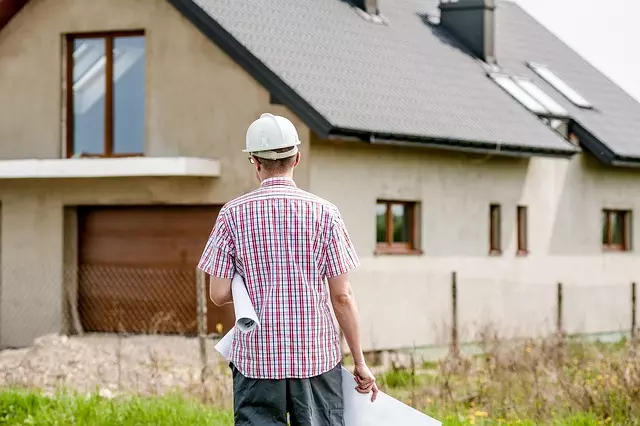Windows play a significant role in a home's energy efficiency, comfort, and aesthetic appeal. Regular inspection and maintenance are crucial for their optimal performance and longevity. Over time, factors like wear and tear and environmental exposure can impact window efficiency, potentially necessitating replacement. Homeowners should look out for signs of deterioration, air leaks, condensation between panes, and operational issues that can affect a home's energy profile. Upgrading to energy-efficient windows can lead to lower utility costs, better indoor air quality, and improved security, making it a smart choice within a comprehensive home repair and maintenance strategy.
When replacing windows, precise measurements and adherence to best practices are essential for achieving efficiency, longevity, and energy savings. The installation process should involve carefully removing old windows, ensuring perfect fit for the new ones, and maintaining a tight seal for temperature control. Quality checks on window components before installation are necessary. During installation, it's important to replace old sashes, clean the area thoroughly, install windows level and square, use appropriate fasteners, and apply fresh caulk and paint for a cohesive look. This meticulous approach not only improves the visual appeal of your home but also significantly enhances energy efficiency and extends the lifespan of your windows, in line with effective home repair and maintenance practices.
Post-installation, consistent maintenance is key to sustaining window performance and longevity. Initial checks should ensure all components operate correctly and are properly sealed. Regular cleaning, seasonal lubrication, resealing caulking, and washing windows are part of the ongoing care necessary for optimal window function. These practices help prevent minor issues from escalating into major repairs, making your investment in new windows a lasting improvement to your home's comfort, security, and energy efficiency. Regular upkeep falls under the category of home repair and maintenance, ensuring that your home remains efficient and comfortable for years to come.
Upgrading your home’s windows not only enhances curb appeal but also significantly improves energy efficiency and comfort. This article delves into the essential aspects of window replacement and installation within the scope of home repair and maintenance. We will guide you through assessing when a window upgrade is necessary, detailing best practices for installation to ensure longevity and performance, and providing strategies for post-installation care and long-term maintenance to protect your investment. Join us as we illuminate the path to smarter, more sustainable windows.
- Assessing the Need for Window Replacement in Home Repair and Maintenance
- Step-by-Step Guide to Window Installation Best Practices
- Post-Installation Care and Long-Term Maintenance Strategies for New Windows
Assessing the Need for Window Replacement in Home Repair and Maintenance

When considering home repair and maintenance, the condition of windows is a critical aspect that cannot be overlooked. Windows play a vital role in energy efficiency, comfort, and overall aesthetics. Over time, wear and tear, environmental factors, and changing architectural trends can necessitate window replacement. Homeowners should regularly inspect their windows for signs of decay, drafts, condensation between panes, and difficulty in operation, which are indicators that the windows may no longer be performing optimally. Assessing window performance involves evaluating not just their functionality but also their contribution to the home’s energy profile. Inefficient windows can lead to significant energy loss, resulting in higher heating and cooling costs. Therefore, a thorough examination of window seals, frames, and glazing is essential when conducting routine home repair and maintenance inspections. Upgrading to modern, energy-efficient models can provide numerous benefits, including reduced utility bills, improved indoor air quality, and enhanced security features. In summary, the decision to replace windows should be informed by a comprehensive analysis of their current condition, performance, and potential to improve the home’s functionality and comfort. This process is integral to effective home repair and maintenance practices.
Step-by-Step Guide to Window Installation Best Practices

When undertaking window replacement and installation as part of home repair and maintenance, following best practices ensures efficiency, longevity, and energy efficiency. Proper preparation is key; begin by carefully removing the old windows, taking note of their condition to understand what improvements or changes are necessary for the new installation. Measure accurately to order windows that fit precisely within the existing openings. This attention to detail minimizes the need for additional adjustments during installation and contributes to a tighter seal, which is crucial for maintaining optimal temperature control within your home.
Once the new windows arrive, inspect them thoroughly for any defects. Ensure that all components, including frames, seals, and glass panes, are in pristine condition before proceeding. During installation, adhere to a step-by-step process: start by removing the old window sashes, then proceed to cut back any peeling paint or caulk from the frame. Clean the area thoroughly to ensure a strong bond for new seals. Install the lower sash first, followed by the upper, making sure both are level and square in the opening. Secure the sash with fasteners, as recommended by the manufacturer, to prevent future movement or drafts. Finally, apply fresh caulk around the edges of the window and paint the frames to blend seamlessly with your home’s exterior. This meticulous approach to window installation as part of routine home repair and maintenance not only enhances the aesthetic appeal but also promotes energy efficiency and extends the lifespan of your windows.
Post-Installation Care and Long-Term Maintenance Strategies for New Windows

After the installation of new windows in your home, it’s crucial to adopt a maintenance regimen that will prolong their lifespan and ensure optimal performance. Initial post-installation care involves a thorough inspection of the windows to confirm proper operation and seal. This includes checking for any signs of leaks or improper sealing, ensuring that all operational elements like locks, handles, and hinges function smoothly. Homeowners should also clean the frames and glass regularly to maintain clarity and prevent damage from dirt and grime buildup.
For long-term maintenance, it’s advisable to perform seasonal checks on your windows. This includes lubricating moving parts with a suitable lubricant to prevent corrosion and wear. During these checks, inspect the caulking and seals for signs of deterioration or damage and reapply as necessary to maintain energy efficiency and protect against moisture intrusion. Additionally, it’s important to clean the windows from both inside and out to remove any stains or residues that could compromise their appearance and functionality over time. Regular maintenance is a part of home repair and maintenance best practices, helping to prevent minor issues from becoming costly repairs. By adhering to these strategies, your new windows will remain a sound investment in your home’s comfort, security, and energy efficiency for years to come.
When considering home repair and maintenance, the decision to replace windows is both a strategic investment and an enhancement of your living environment. This article has outlined the critical steps for evaluating the need for such replacements, detailed best practices for installation to ensure optimal performance, and provided essential strategies for post-installation care and long-term maintenance. By following these guidelines, homeowners can guarantee that their windows not only elevate the aesthetic appeal of their homes but also contribute to improved energy efficiency and durability. Investing in quality window installations through meticulous planning and execution is a cornerstone of responsible home repair and maintenance, ensuring comfort, security, and cost savings over time.
